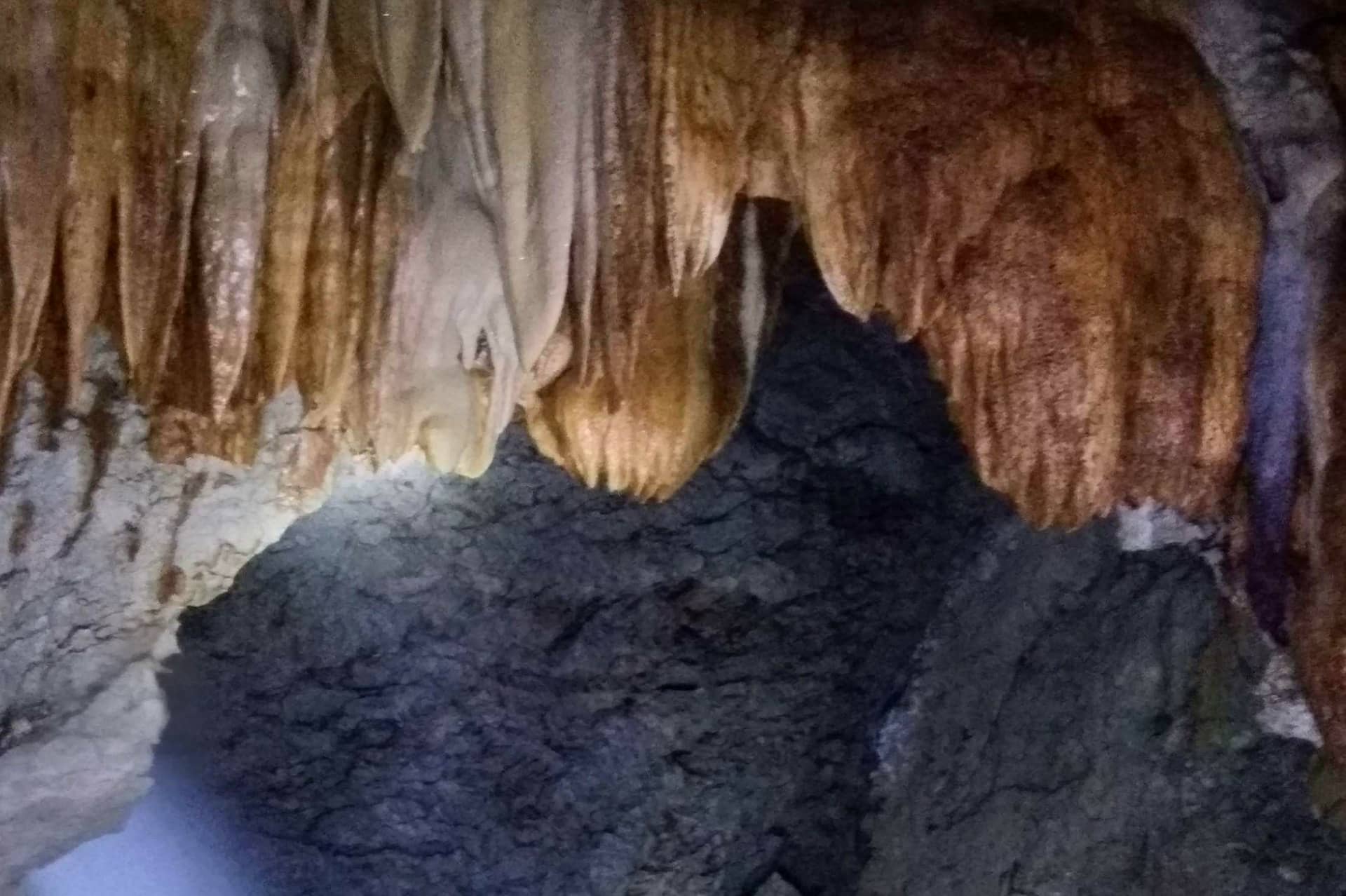
TUBA, Benguet -- Spelunkers will have an alternative site to enjoy caving in this upland town in northern Philippines, with the Aran Cave opening to the public on February 16.
Located at the scenic mountains of historic Kennon Road, bordering Barangays Camp 3 and Twin Peaks, the cave’s mouth is found on a cliff along the Bued River.
With three distinct portions inside leading to various exits, the Aran Cave is endowed with flora and fauna, including orchids, vines, and shrub species endemic to the place.
There are also countless bats that inhabit the big chamber of Aran Cave's "Cave 3" that is naturally hallowed out just past the main entrance. An underground stream at "Cave 1" harbors some eels.
Like in the adjoining rock walls, some flowering and wild herbs grow among the moss at the cave’s mouth.
A geological and hydrological wonder include Cave 1’s underground stream of crystal clear water. A waterfall as high as five meters with a deep pond is found along the watercourse.
Inside are dominant rock formations of stalactites and flowstones or calcite deposited by a thin sheet of flowing water on the walls or floor of the cave.
Coming from the side of Kennon Road is a hanging bridge -- which adds to the adventure -- leading to the mouth of the cave that opens to the inside.
Municipal tourism officer Anabel Solano told the Philippine News Agency (PNA) on Wednesday that all management, operational, and safety measures were in place to safeguard visitors.
Based on the management plan of the eco-tourism site, the three caves cover an approximate area of 157.75 hectares.
Local folks claimed that Cave 1, which will be the initial site to be opened, is very deep, while Caves 2 and 3 are comparatively shallow ones.
Accordingly, the Americans who then explored the cave during the construction of Kennon Road in the early 1900's told residents that Cave 1 reached San Fernando, La Union.
Caves 1 and 3 are circuitous with detours and branches. Cave 1 has two entrances, both located on a cliff facing about some 30 meters from the water’s edge fronting the Bued River.
The other two caves are located higher up the mountain, with the third one having a big cave entrance and its inside floor littered with blocks of stones.
Solano explained that the opening on February 16 was preceded with a long time of planning and scouring of the place to actually what was inside. The assessment of the cave was in support of the government’s cave conservation program.
Solano assured that the community was involved in the preparation of the action plan, through the conduct of consultation with the two barangays that had territorial jurisdiction over the cave.
The barangays will also implement the tourism activity in the area.
An entrance, environmental, cultural, and tour guide fee will be collected from cave goers. This will be for the maintenance and preservation of the area.
Visitors to the cave are also required to undergo a briefing before proceeding to the area.
According to the Management Plan of the cave prepared by the Department of Environment and Natural Resources Cordillera, the cave got its name from a folklore story that the cave was once the home of a giant named “Aran.”
The story tells that during the construction of the historic Kennon Road that is engineered by Lyman Kennon and laborers from 46 different nations and nearby local provinces, laborers mysteriously are missing one by one.
It was the people of Barangay Twin Peaks, through a resolution, that adopted “Aran” as the official name of the cave.
For spelunking at Aran Cave, Solano is advising visitors to coordinate with the local tourism office, which can provide them with the needed safety information. (PNA)
